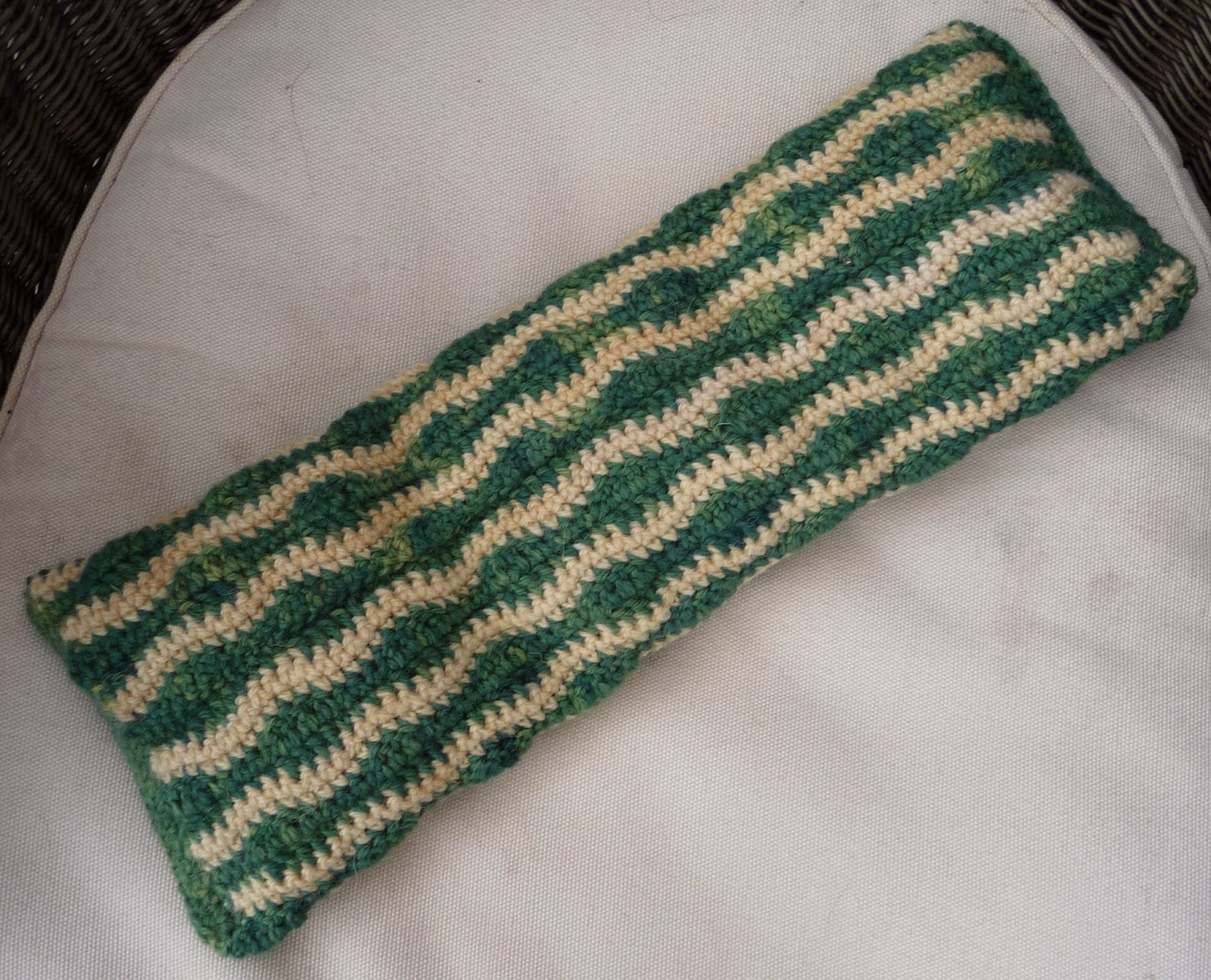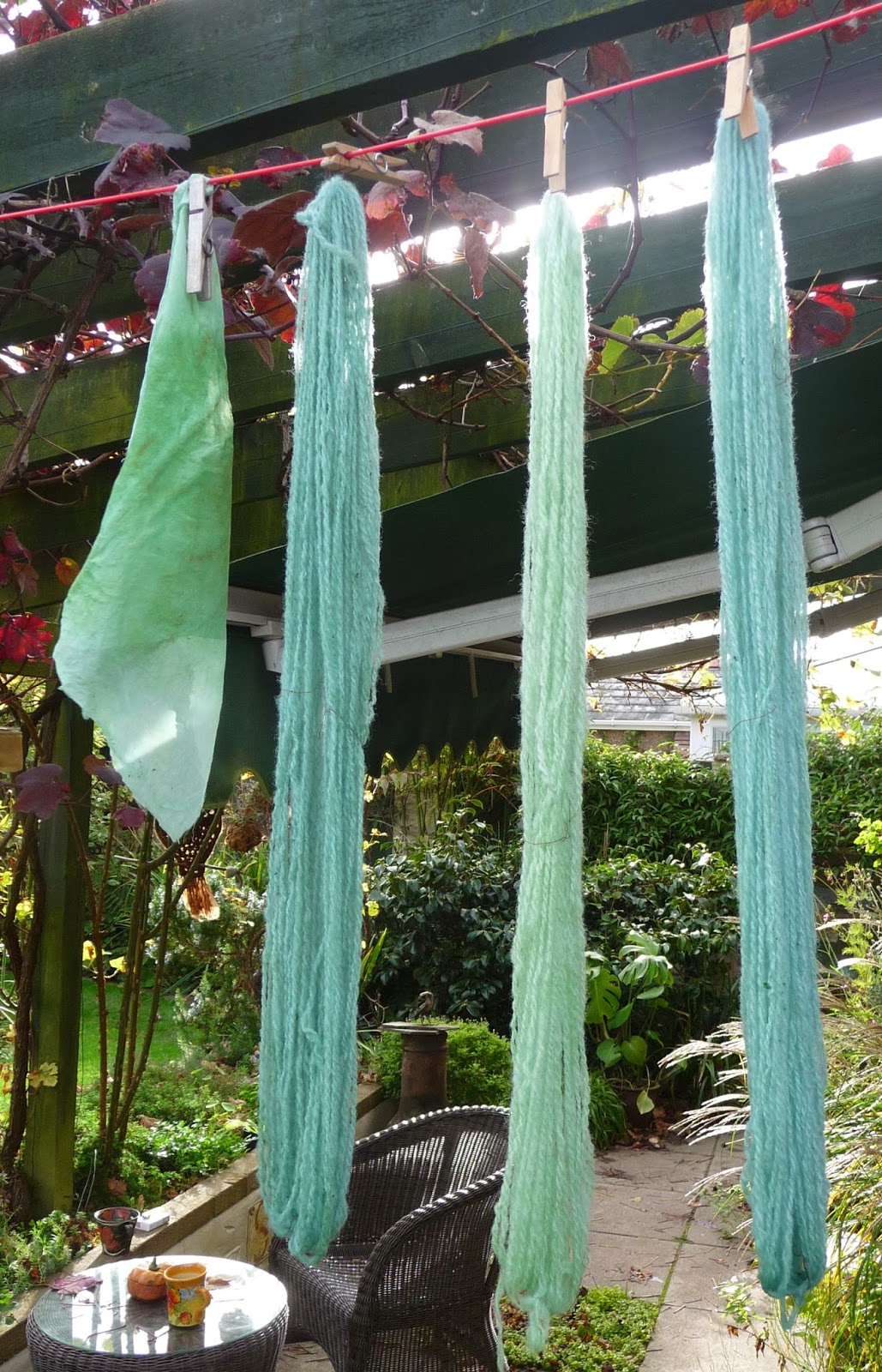A lavender heat pack is an estimable project. Apart from making welcome presents for anyone over forty, they are a great way to use small dyed skeins, test out ideas for fair isle patterns or practise new crochet stitches.
Lavender is such a good tempered plant and so heavenly to brush past - I rarely pick the flowers in bud, like you are supposed to. The scent is ideal for heat packs, soothing and calming. It costs surprisingly little to buy a whole kilo of dried lavender. Selotaped shut, my bag has lasted a couple of years and the remainder still smells wonderful.
I made a full shoulder and neck heat pack while I was finding out how a Suffolk fleece would knit up in cable. It turned out to be badly discoloured and too coarse for a jumper, but at least I had a functional item to show for the effort.


Last summer, I entered the following pattern in a competition. The rules said the project had to use less than 30g of alpaca dk yarn. A small lavender heat pack to put in your pocket on a cold day seemed a cunning plan.
The pattern below didn't win, but last week, I tried out the end result and it does work. The alpaca is wonderfully soft, not my own spinning, though I dyed half of it with woad.
The pattern below didn't win, but last week, I tried out the end result and it does work. The alpaca is wonderfully soft, not my own spinning, though I dyed half of it with woad.
Winter Pocket Warmer Pattern
Materials
23g double knitting alpaca
(11g
for each piece and a length for crocheting them together)
4mm
knitting needles
2mm
crochet hook
Two
pieces of fabric 16cm2
Needle
and thread to sew them together
One
mugful of pearl barley, or pearl barley mixed with dried lavender or other
herbs
Optional
– essential oil
Main Piece – knit two
Cast on
27 stitches.
Row
1 K1 *P1 K1* repeat to end
Rows 2
to 4, as Row 1
Row
5 K1 P1 K3 *K2 together, yarn forward,
K1* repeat to last 4 stitches K2 P1 K1
Row
6 K1 P1 K1 purl to last 3 stitches K1
P1 K1
Row
7 K1 P1 K3 *yfwd, K1, K2 together*
repeat to last 4 stitches K2 P1 K1
Row
8 as Row 6
Repeat
rows 5 to 8 seven times.
Repeat rows 1 to 4
Cast
off loosely in K1 P1 pattern.
Sew in
loose ends.
Wash
and pin out to 14cm2 to dry.
Cut the
cotton fabric so that it is at least two cm wider than the knitted piece – a
margin of over 1cm all the way round.
Hem the
two pieces together, leaving half the width of the bag open at the top, and
turn inside out. It is important that
the finished bag is slightly larger than the knitted cover so that it fills it
completely.
One mug full of pearl barley will fit easily into the bag, do not overfill or it will not fit in a pocket or be pleasant to squeeze in an adult sized hand. Some of the pearl barley can be replaced with dried lavender or other dried herbs, so that the bag becomes scented. If you are using plain pearl barley, you could put it in a bowl beforehand, add a few drops of any essential oil and wait half an hour for this to be absorbed, before filling the bag. Sew the bag shut.
Put the bag of pearl
barley inside. Before going out on a
cold day, put this pocket warmer in the microwave on full power for one
minute. It should keep its heat for
quite a while, making your coat pocket a scented haven for a frozen hand.
Had I written this pattern for two pocket warmers, it would have needed more than 30g yarn. If you can't rely on always having someone to hold your other hand and you happened to have 46g double knitting wool to spare, you could keep both hands warm.
Had I written this pattern for two pocket warmers, it would have needed more than 30g yarn. If you can't rely on always having someone to hold your other hand and you happened to have 46g double knitting wool to spare, you could keep both hands warm.























































